Final Exam for OChem 2: Any Tips?
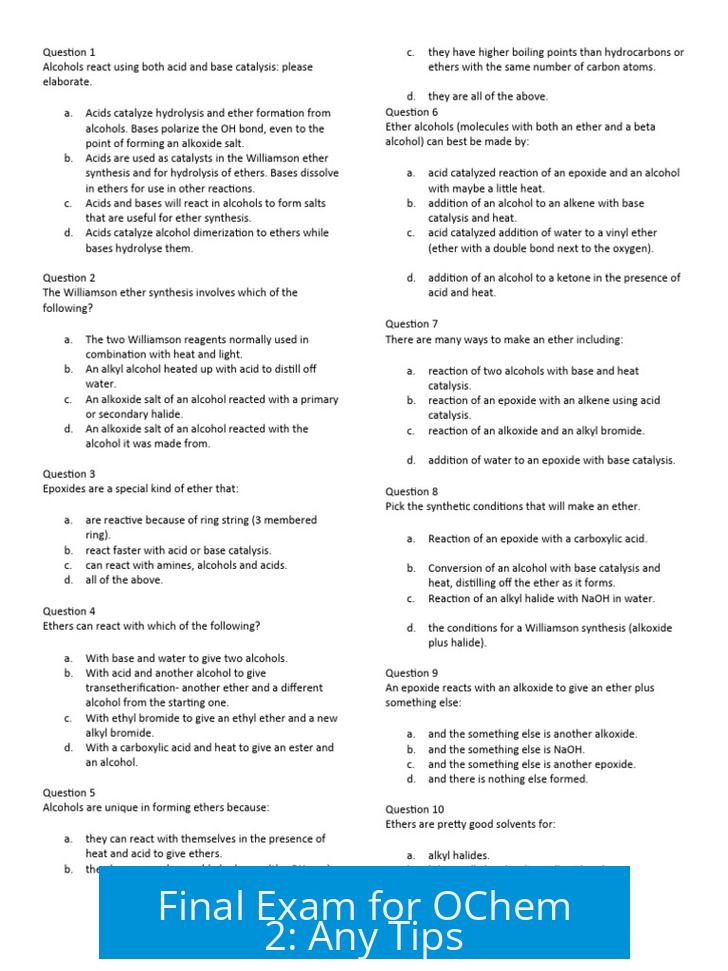
Success in the OChem 2 final exam depends on understanding reaction mechanisms, stereochemistry, and functional group behavior, not just memorization. Focus on core concepts, practice problems, and recognize how reagents influence transformations.
Understanding the Content and Exam Structure
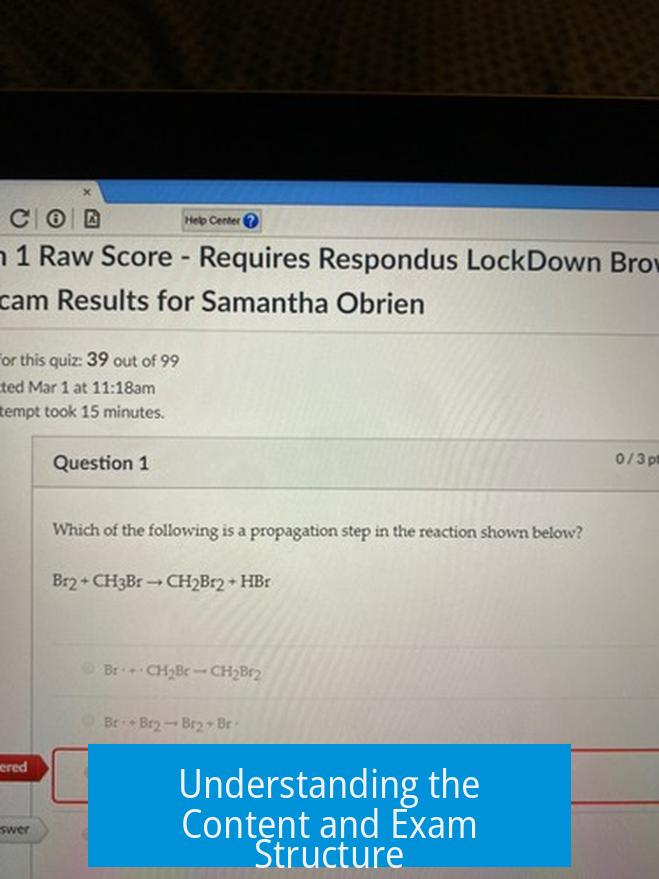
The OChem 2 final typically covers multiple essential topics:
- Alkenes and Their Reactions: Know addition reactions, regioselectivity, and stereochemical outcomes.
- Electrophilic Aromatic Substitution (EAS): Study how substituents affect substitution patterns and reaction rates.
- Aldehydes and Ketones: Be familiar with nucleophilic additions, oxidations, and reductions.
- Elimination, Substitution, and Addition Reactions: Review the basic mechanisms, recognizing differences among SN1, SN2, E1, and E2 processes.
- Stereochemistry: Study chiral centers, configurations, and conformational analysis.
- Oxidation Reactions: Know reagents such as CrO3, K2Cr2O7, and KMnO4 and their specific roles.
The exam usually spans about two hours. Time management is critical. Prioritize complex problems early and allocate minutes carefully to less demanding questions.
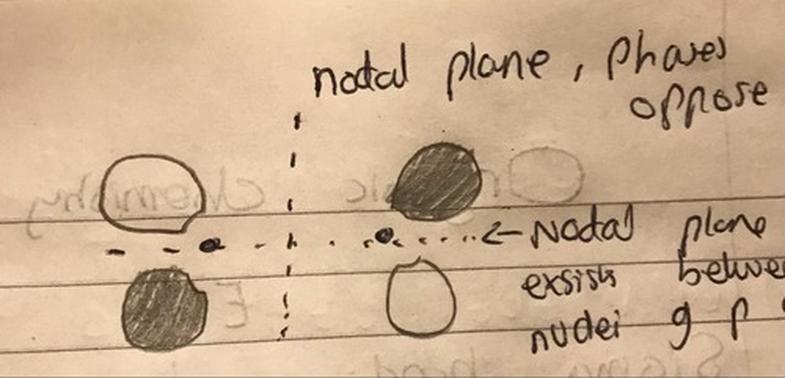
Key Study Strategies
Shift Focus from Memorization to Conceptual Understanding
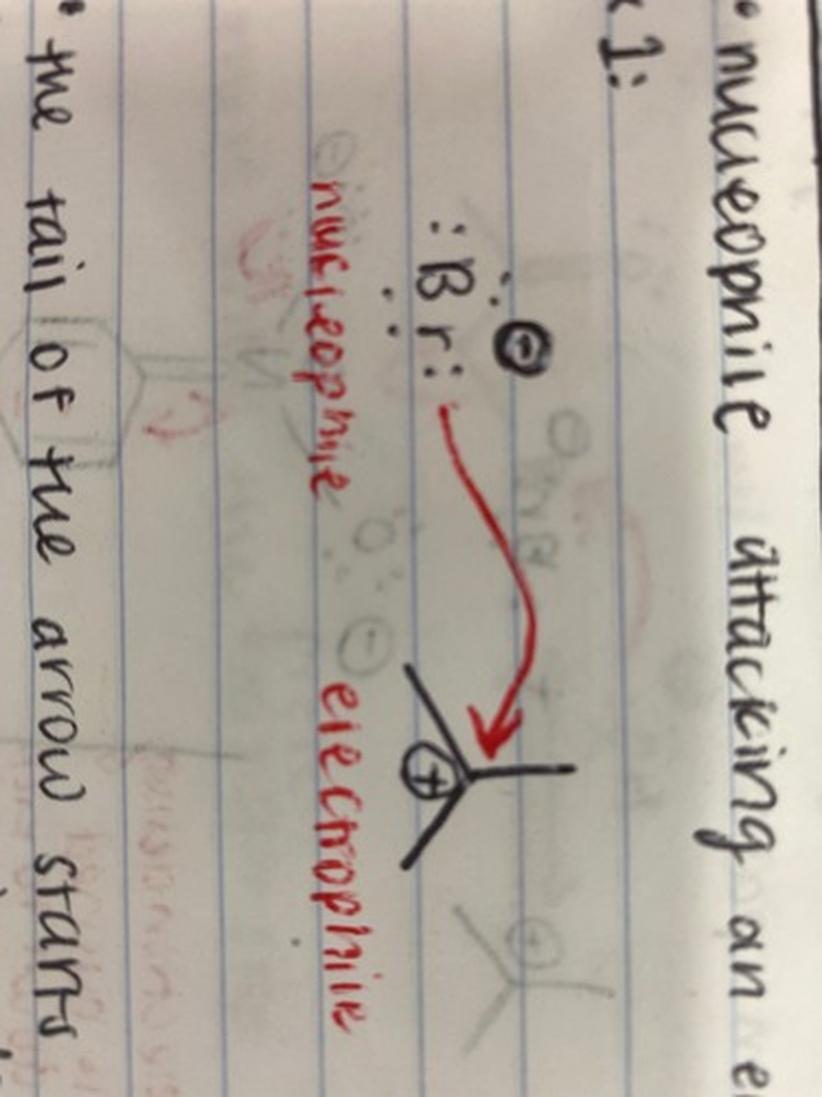
While Organic Chemistry 1 may allow some memorization, OChem 2 requires deeper understanding. Conceptual grasp of how reactions and mechanisms interrelate is vital. This shift is mandatory to solve new, unfamiliar problems effectively.
Memorizing common benzene substituent names and basic facts from Ochem 1 and general chemistry remains beneficial. However, broadly relying on memorization weakens problem-solving ability in this course.
Classify Reagents by Their Function
Group reagents by their action rather than name alone. For example:
| Reagent | Action | Example |
|---|---|---|
| CrO3, K2Cr2O7, KMnO4 | Oxidizing agents | Oxidation of primary alcohols to aldehydes or acids |
| Lewis acids (e.g., FeCl3) | Facilitate electrophilic aromatic substitution | Activate benzene rings |
| Hydrogen halides (HBr, HCl) | Addition to alkenes | Markovnikov additions |
Understanding the purpose and outcome of reagents helps predict products and mechanisms.
Track Electrophiles and Nucleophiles in Reactions
Visualize where nucleophiles and electrophiles are before and after reactions. This tracking clarifies mechanism pathways, aids stereochemical assignments, and prevents confusion in substitution and addition steps.
Master Reaction Mechanisms
Focus on chapters 6 through 10, with an emphasis on addition and elimination mechanisms. Stepwise mechanisms build intuition for predicting reaction outcomes, understanding intermediates, and identifying rate-determining steps.
Stress Aromatic Chemistry
Aromatic substitution appears frequently. Recognize:
- Ortho/para vs meta directing groups
- Strength of directors influences substitution site
- Common substituent effects on activation or deactivation
Memorize at least the names and directing tendencies of key substituents, such as –OH (strong ortho/para director) and –NO2 (meta director). Knowing stronger directing groups guides predicting where electrophiles attack.
Practice Problems Actively
Engage with all assignments. Solve approximately 15 challenging questions per chapter to sharpen skills. If fatigued, prioritize rest to maximize focus and retention during study sessions.
Differentiating OChem 2 from OChem 1
The transition to OChem 2 means moving beyond memorization to understanding reaction networks and their underlying principles. Students should approach problems by linking reactions and recognizing patterns across various functional groups.
This is essential because OChem 2 material relates directly to biochemical pathways and advanced organic applications, unlike the more foundational OChem 1 course.
Relevance to Biochemistry and Medical School
A solid grasp of OChem 2 supports learning biochemistry effectively. Biochemistry professors often assume organic chemistry fundamentals already mastered, so gaps in OChem 2 knowledge can hinder progress.
Additionally, OChem 2 topics commonly appear in the MCAT exam and are prerequisites for many medical schools. Familiarity with reaction mechanisms, functional group transformations, and stereochemistry aids in these future studies.
ACS Final Exam Preparation
Students facing ACS-style final exams should access resources such as:
- ACS Official Practice Questions
- Organic textbooks with ACS-style end-of-chapter problems
- Online ACS prep materials (note some may require purchase)
These simulate exam conditions and problem types, offering valuable insight into ACS-specific expectations and frequently tested concepts.
Time Management and Exam Day Tips
- Allocate time for each section according to difficulty.
- Start with questions you are confident about to secure points early.
- Keep track of elapsed time and adjust pacing.
- Double-check mechanisms and stereochemical assignments carefully.
- Review key directing effects and reagent roles if time permits.
Summary of Key Takeaways
- Prioritize understanding over memorization. Connect concepts across reactions and mechanisms.
- Classify reagents by their functions and predicting their effects.
- Focus on electrophilic aromatic substitution, stereochemistry, and key mechanisms.
- Practice challenging problems actively. Quality practice beats quantity.
- Use ACS-style resources if your final follows this format.
- Manage time efficiently and rest adequately before the exam.
- Relate OChem 2 knowledge to biochemical applications and future exams like the MCAT.
Final Exam for OChem 2: Any Tips?
Got your OChem 2 final exam coming up? Ready for some tips that actually help? Let’s cut through the confusion and get straight to what works. Organic Chemistry II is a beast, but with the right strategies, you can tame it.
First, know the scope. Your final covers a wide range of topics: alkenes and their reactions, electrophilic aromatic substitution, aldehydes and ketones, elimination, substitution, addition reactions, and mechanisms spanning chapters 6 to 10. Don’t forget stereochemistry – it’s going to show up a lot! Plus, be prepared for those classic oxidation reactions using chromium (VI) reagents and KMnO4. And here’s a fun fact: you get two hours for this test. Manage your time like a pro!
Why ACS Style Questions Are Your New Best Friend
If your exam sticks to the American Chemical Society (ACS) format, you’ve hit the jackpot with ACS style questions. Many organic chemistry books offer these, and they’re a treasure trove. They aren’t just questions; they simulate the actual exam’s style and difficulty.
Try burning through 15 challenging ACS questions per chapter rather than drowning in every problem available. Quality beats quantity here. This targeted practice focuses your brain on key concepts and mechanisms that frequently appear on finals. Practice smart, not hard.
Forget Pure Memorization—Understand and Connect
OChem 2 isn’t about cramming anymore. Unlike OChem 1, where memory could get you far, OChem 2 demands you understand concepts and see how they connect.
Track reactions through their course. Where’s the nucleophile at the start? Where does it end up? What about the electrophile? Ask these questions out loud. Classify reagents not just by name, but by their role. Are they ortho/para directors? What’s their strength relative to meta directors? This kind of thinking shifts you from a student memorizing facts to a chemist spotting patterns.
Serious About Aromatic Reactions? You Better Be!
Let’s be real: aromatic substitution reactions pop up repeatedly. Dedicate serious study time here. You must memorize para and ortho directing groups, even if the exam allows a chart. Why? Because understanding their directing strength helps predict product outcomes quickly during the test.
Keep in mind, stronger ortho/para directors will dominate the reaction’s regioselectivity versus weaker or meta directors. This is a detail that can make or break your answer.
Balancing Study and Rest: The Surprisingly Crucial Combo
Here’s a twist: If you’re tired, skip the relentless study session and get some sleep. Rest is your brain’s best friend when it needs to retain dense organic chemistry material.
Balance active study with rest. After solid focus on 15 tough practice questions, allow yourself downtime. This combo keeps your mind fresh and your recall sharp.
Maximizing Online and Paid Resources
Looking for additional practice? The American Chemical Society offers paid online resources tailored to their test format. Yes, it costs money, but for many, it’s worth the investment. These resources help simulate test conditions and ensure the types of questions you study match the final paper’s style.
If you’re on a budget, focus first on textbooks with ACS questions and any professor-provided practice. Then, if you crave more, dive into those paid tools.
Mechanisms: The Heart of OChem 2
You’ll face many mechanism questions, especially on addition and elimination reactions. Do not just memorize steps—understand what’s happening at each stage. If you know why an electron moves from one place to another, you’ll find these problems straightforward.
Review mechanisms from chapters 6 through 10 thoroughly. This foundation supports your ability to tackle diverse organic transformations fluidly.
OChem 2’s Role in Your Future Studies
Thinking beyond the test, OChem 2 matters. It lays groundwork for subjects like biochemistry, which often assume you’ve mastered organic reactions. Professors rush through biochem material, expecting you to know your OChem 2.
Medical school hopefuls, listen up: concepts you tackle here could appear on your MCAT. Passing OChem 2 clears hurdles and deepens your grasp on how biological chemistry works at a molecular level.
Final Words: Your Game Plan
- Prioritize understanding over rote memory. Learn to see patterns and connections.
- Use ACS style questions—to mirror your exams perfectly.
- Focus deeply on aromatic substitution—memorize directing effects well.
- Don’t drown in problems; master 15 tough ones per chapter.
- Rest! Don’t study tired—your brain needs it to perform.
- Review all mechanisms, especially addition & elimination.
- Consider quality paid resources if budgets allow.
Remember, this exam isn’t just a hurdle. It’s a stepping stone to advanced chemistry and your future goals. So, buckle up, dive in with these pointed tips, and watch that score climb!
Feeling overwhelmed? How do you plan to balance practice and rest? Drop a comment and share your strategies!
What topics should I focus on for the OChem 2 final exam?
Focus on alkenes and their reactions, electrophilic aromatic substitution, aldehydes and ketones, elimination, substitution, and addition mechanisms. Also, pay attention to stereochemistry and oxidation reactions involving chromium and manganese reagents.
How should I approach studying for the OChem 2 final compared to OChem 1?
Shift from memorization to understanding concepts and making connections. OChem 2 demands knowing how reactions work, not just recalling facts. Practice mechanisms thoroughly and classify reagents by their directing effects.
Any tips for handling mechanisms on the OChem 2 final?
Review all addition and elimination mechanisms from chapters 6 to 10. Track where nucleophiles and electrophiles begin and end. Practice drawing and explaining each mechanism clearly to reinforce understanding.
How important is aromatic substitution and directing effects for the exam?
Very important. Study the strength of ortho/para directors versus meta directors. Remember the directing effects and focus on the stronger ones since they dictate the outcome of aromatic reactions.
What is the best way to use practice problems for the OChem 2 final?
Do about 15 challenging problems from each chapter. Focus on quality, not quantity. Use practice questions your professor provides, and review ACS style questions if applicable. Rest when tired to keep your mind sharp.


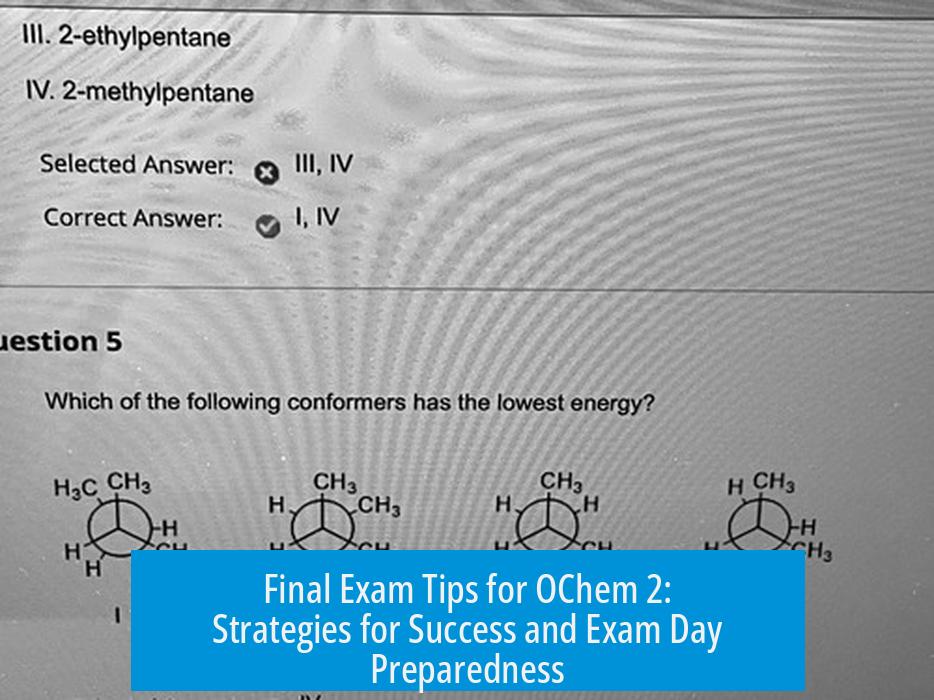


Leave a Comment